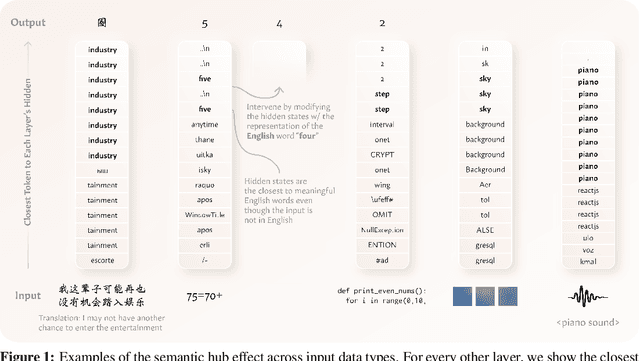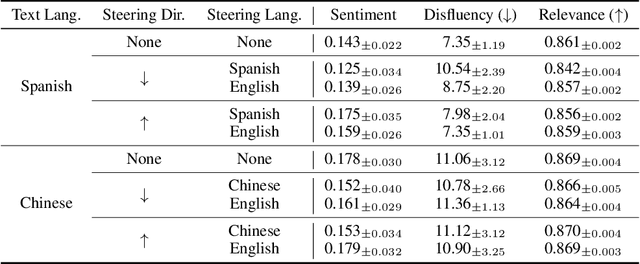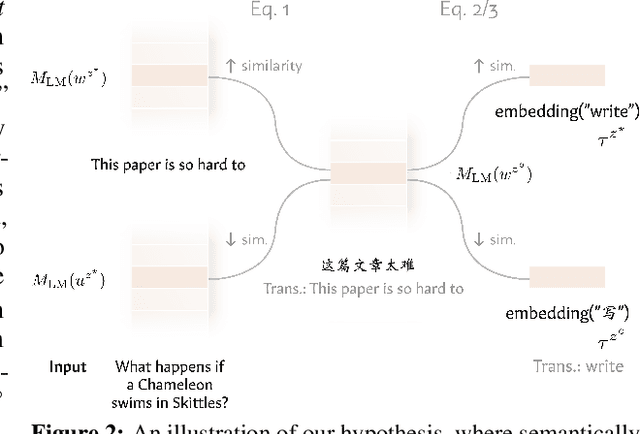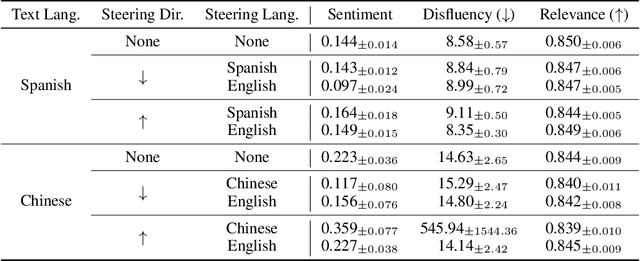Jiasen Lu
Pico-Banana-400K: A Large-Scale Dataset for Text-Guided Image Editing
Oct 22, 2025Abstract:Recent advances in multimodal models have demonstrated remarkable text-guided image editing capabilities, with systems like GPT-4o and Nano-Banana setting new benchmarks. However, the research community's progress remains constrained by the absence of large-scale, high-quality, and openly accessible datasets built from real images. We introduce Pico-Banana-400K, a comprehensive 400K-image dataset for instruction-based image editing. Our dataset is constructed by leveraging Nano-Banana to generate diverse edit pairs from real photographs in the OpenImages collection. What distinguishes Pico-Banana-400K from previous synthetic datasets is our systematic approach to quality and diversity. We employ a fine-grained image editing taxonomy to ensure comprehensive coverage of edit types while maintaining precise content preservation and instruction faithfulness through MLLM-based quality scoring and careful curation. Beyond single turn editing, Pico-Banana-400K enables research into complex editing scenarios. The dataset includes three specialized subsets: (1) a 72K-example multi-turn collection for studying sequential editing, reasoning, and planning across consecutive modifications; (2) a 56K-example preference subset for alignment research and reward model training; and (3) paired long-short editing instructions for developing instruction rewriting and summarization capabilities. By providing this large-scale, high-quality, and task-rich resource, Pico-Banana-400K establishes a robust foundation for training and benchmarking the next generation of text-guided image editing models.
AToken: A Unified Tokenizer for Vision
Sep 19, 2025Abstract:We present AToken, the first unified visual tokenizer that achieves both high-fidelity reconstruction and semantic understanding across images, videos, and 3D assets. Unlike existing tokenizers that specialize in either reconstruction or understanding for single modalities, AToken encodes these diverse visual inputs into a shared 4D latent space, unifying both tasks and modalities in a single framework. Specifically, we introduce a pure transformer architecture with 4D rotary position embeddings to process visual inputs of arbitrary resolutions and temporal durations. To ensure stable training, we introduce an adversarial-free training objective that combines perceptual and Gram matrix losses, achieving state-of-the-art reconstruction quality. By employing a progressive training curriculum, AToken gradually expands from single images, videos, and 3D, and supports both continuous and discrete latent tokens. AToken achieves 0.21 rFID with 82.2% ImageNet accuracy for images, 3.01 rFVD with 40.2% MSRVTT retrieval for videos, and 28.28 PSNR with 90.9% classification accuracy for 3D.. In downstream applications, AToken enables both visual generation tasks (e.g., image generation with continuous and discrete tokens, text-to-video generation, image-to-3D synthesis) and understanding tasks (e.g., multimodal LLMs), achieving competitive performance across all benchmarks. These results shed light on the next-generation multimodal AI systems built upon unified visual tokenization.
UniGen: Enhanced Training & Test-Time Strategies for Unified Multimodal Understanding and Generation
May 20, 2025Abstract:We introduce UniGen, a unified multimodal large language model (MLLM) capable of image understanding and generation. We study the full training pipeline of UniGen from a data-centric perspective, including multi-stage pre-training, supervised fine-tuning, and direct preference optimization. More importantly, we propose a new Chain-of-Thought Verification (CoT-V) strategy for test-time scaling, which significantly boosts UniGen's image generation quality using a simple Best-of-N test-time strategy. Specifically, CoT-V enables UniGen to act as both image generator and verifier at test time, assessing the semantic alignment between a text prompt and its generated image in a step-by-step CoT manner. Trained entirely on open-source datasets across all stages, UniGen achieves state-of-the-art performance on a range of image understanding and generation benchmarks, with a final score of 0.78 on GenEval and 85.19 on DPG-Bench. Through extensive ablation studies, our work provides actionable insights and addresses key challenges in the full life cycle of building unified MLLMs, contributing meaningful directions to the future research.
GIE-Bench: Towards Grounded Evaluation for Text-Guided Image Editing
May 16, 2025



Abstract:Editing images using natural language instructions has become a natural and expressive way to modify visual content; yet, evaluating the performance of such models remains challenging. Existing evaluation approaches often rely on image-text similarity metrics like CLIP, which lack precision. In this work, we introduce a new benchmark designed to evaluate text-guided image editing models in a more grounded manner, along two critical dimensions: (i) functional correctness, assessed via automatically generated multiple-choice questions that verify whether the intended change was successfully applied; and (ii) image content preservation, which ensures that non-targeted regions of the image remain visually consistent using an object-aware masking technique and preservation scoring. The benchmark includes over 1000 high-quality editing examples across 20 diverse content categories, each annotated with detailed editing instructions, evaluation questions, and spatial object masks. We conduct a large-scale study comparing GPT-Image-1, the latest flagship in the text-guided image editing space, against several state-of-the-art editing models, and validate our automatic metrics against human ratings. Results show that GPT-Image-1 leads in instruction-following accuracy, but often over-modifies irrelevant image regions, highlighting a key trade-off in the current model behavior. GIE-Bench provides a scalable, reproducible framework for advancing more accurate evaluation of text-guided image editing.
SlowFast-LLaVA-1.5: A Family of Token-Efficient Video Large Language Models for Long-Form Video Understanding
Mar 27, 2025Abstract:We introduce SlowFast-LLaVA-1.5 (abbreviated as SF-LLaVA-1.5), a family of video large language models (LLMs) offering a token-efficient solution for long-form video understanding. We incorporate the two-stream SlowFast mechanism into a streamlined training pipeline, and perform joint video-image training on a carefully curated data mixture of only publicly available datasets. Our primary focus is on highly efficient model scales (1B and 3B), demonstrating that even relatively small Video LLMs can achieve state-of-the-art performance on video understanding, meeting the demand for mobile-friendly models. Experimental results demonstrate that SF-LLaVA-1.5 achieves superior performance on a wide range of video and image tasks, with robust results at all model sizes (ranging from 1B to 7B). Notably, SF-LLaVA-1.5 achieves state-of-the-art results in long-form video understanding (e.g., LongVideoBench and MLVU) and excels at small scales across various video benchmarks.
STIV: Scalable Text and Image Conditioned Video Generation
Dec 10, 2024Abstract:The field of video generation has made remarkable advancements, yet there remains a pressing need for a clear, systematic recipe that can guide the development of robust and scalable models. In this work, we present a comprehensive study that systematically explores the interplay of model architectures, training recipes, and data curation strategies, culminating in a simple and scalable text-image-conditioned video generation method, named STIV. Our framework integrates image condition into a Diffusion Transformer (DiT) through frame replacement, while incorporating text conditioning via a joint image-text conditional classifier-free guidance. This design enables STIV to perform both text-to-video (T2V) and text-image-to-video (TI2V) tasks simultaneously. Additionally, STIV can be easily extended to various applications, such as video prediction, frame interpolation, multi-view generation, and long video generation, etc. With comprehensive ablation studies on T2I, T2V, and TI2V, STIV demonstrate strong performance, despite its simple design. An 8.7B model with 512 resolution achieves 83.1 on VBench T2V, surpassing both leading open and closed-source models like CogVideoX-5B, Pika, Kling, and Gen-3. The same-sized model also achieves a state-of-the-art result of 90.1 on VBench I2V task at 512 resolution. By providing a transparent and extensible recipe for building cutting-edge video generation models, we aim to empower future research and accelerate progress toward more versatile and reliable video generation solutions.
One Diffusion to Generate Them All
Nov 25, 2024



Abstract:We introduce OneDiffusion, a versatile, large-scale diffusion model that seamlessly supports bidirectional image synthesis and understanding across diverse tasks. It enables conditional generation from inputs such as text, depth, pose, layout, and semantic maps, while also handling tasks like image deblurring, upscaling, and reverse processes such as depth estimation and segmentation. Additionally, OneDiffusion allows for multi-view generation, camera pose estimation, and instant personalization using sequential image inputs. Our model takes a straightforward yet effective approach by treating all tasks as frame sequences with varying noise scales during training, allowing any frame to act as a conditioning image at inference time. Our unified training framework removes the need for specialized architectures, supports scalable multi-task training, and adapts smoothly to any resolution, enhancing both generalization and scalability. Experimental results demonstrate competitive performance across tasks in both generation and prediction such as text-to-image, multiview generation, ID preservation, depth estimation and camera pose estimation despite relatively small training dataset. Our code and checkpoint are freely available at https://github.com/lehduong/OneDiffusion
The Semantic Hub Hypothesis: Language Models Share Semantic Representations Across Languages and Modalities
Nov 07, 2024



Abstract:Modern language models can process inputs across diverse languages and modalities. We hypothesize that models acquire this capability through learning a shared representation space across heterogeneous data types (e.g., different languages and modalities), which places semantically similar inputs near one another, even if they are from different modalities/languages. We term this the semantic hub hypothesis, following the hub-and-spoke model from neuroscience (Patterson et al., 2007) which posits that semantic knowledge in the human brain is organized through a transmodal semantic "hub" which integrates information from various modality-specific "spokes" regions. We first show that model representations for semantically equivalent inputs in different languages are similar in the intermediate layers, and that this space can be interpreted using the model's dominant pretraining language via the logit lens. This tendency extends to other data types, including arithmetic expressions, code, and visual/audio inputs. Interventions in the shared representation space in one data type also predictably affect model outputs in other data types, suggesting that this shared representations space is not simply a vestigial byproduct of large-scale training on broad data, but something that is actively utilized by the model during input processing.
MM-Ego: Towards Building Egocentric Multimodal LLMs
Oct 09, 2024



Abstract:This research aims to comprehensively explore building a multimodal foundation model for egocentric video understanding. To achieve this goal, we work on three fronts. First, as there is a lack of QA data for egocentric video understanding, we develop a data engine that efficiently generates 7M high-quality QA samples for egocentric videos ranging from 30 seconds to one hour long, based on human-annotated data. This is currently the largest egocentric QA dataset. Second, we contribute a challenging egocentric QA benchmark with 629 videos and 7,026 questions to evaluate the models' ability in recognizing and memorizing visual details across videos of varying lengths. We introduce a new de-biasing evaluation method to help mitigate the unavoidable language bias present in the models being evaluated. Third, we propose a specialized multimodal architecture featuring a novel "Memory Pointer Prompting" mechanism. This design includes a global glimpse step to gain an overarching understanding of the entire video and identify key visual information, followed by a fallback step that utilizes the key visual information to generate responses. This enables the model to more effectively comprehend extended video content. With the data, benchmark, and model, we successfully build MM-Ego, an egocentric multimodal LLM that shows powerful performance on egocentric video understanding.
Molmo and PixMo: Open Weights and Open Data for State-of-the-Art Multimodal Models
Sep 25, 2024



Abstract:Today's most advanced multimodal models remain proprietary. The strongest open-weight models rely heavily on synthetic data from proprietary VLMs to achieve good performance, effectively distilling these closed models into open ones. As a result, the community is still missing foundational knowledge about how to build performant VLMs from scratch. We present Molmo, a new family of VLMs that are state-of-the-art in their class of openness. Our key innovation is a novel, highly detailed image caption dataset collected entirely from human annotators using speech-based descriptions. To enable a wide array of user interactions, we also introduce a diverse dataset mixture for fine-tuning that includes in-the-wild Q&A and innovative 2D pointing data. The success of our approach relies on careful choices for the model architecture details, a well-tuned training pipeline, and, most critically, the quality of our newly collected datasets, all of which will be released. The best-in-class 72B model within the Molmo family not only outperforms others in the class of open weight and data models but also compares favorably against proprietary systems like GPT-4o, Claude 3.5, and Gemini 1.5 on both academic benchmarks and human evaluation. We will be releasing all of our model weights, captioning and fine-tuning data, and source code in the near future. Select model weights, inference code, and demo are available at https://molmo.allenai.org.
 Add to Chrome
Add to Chrome Add to Firefox
Add to Firefox Add to Edge
Add to Edge